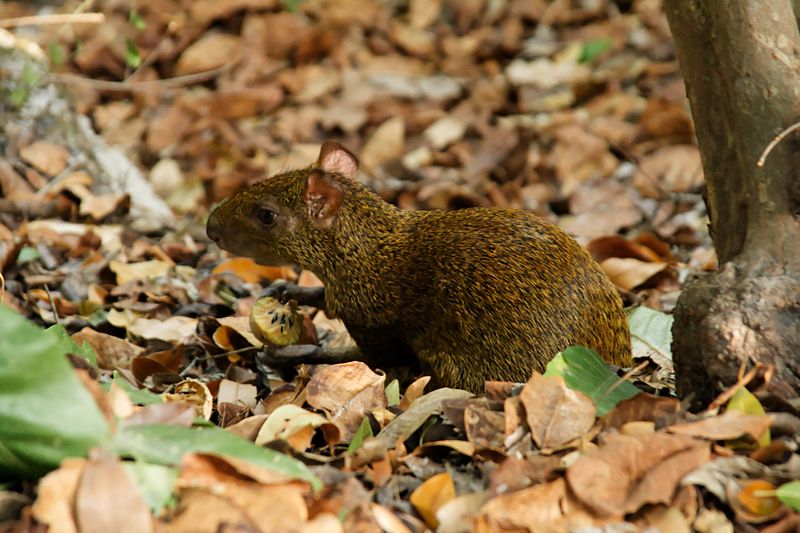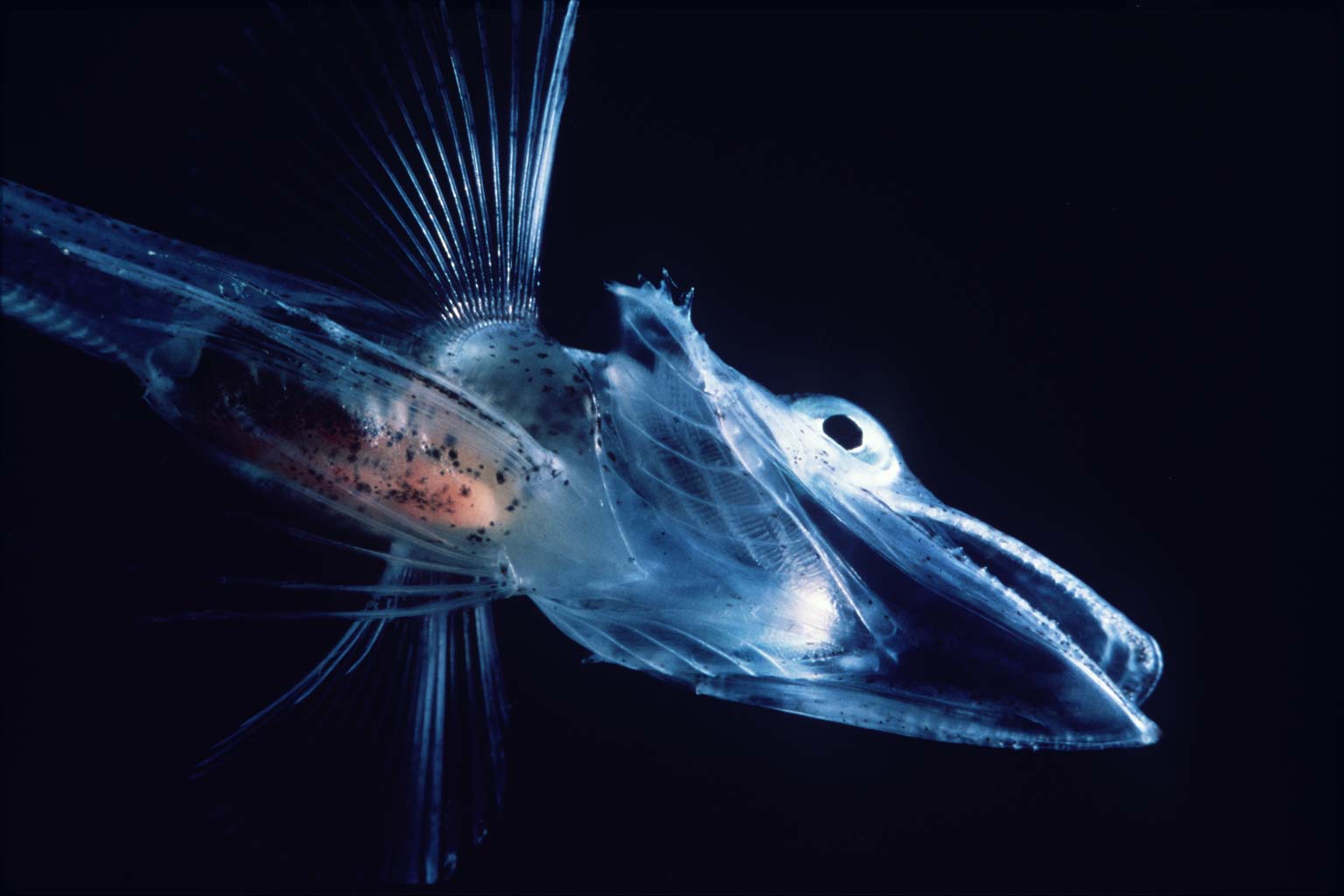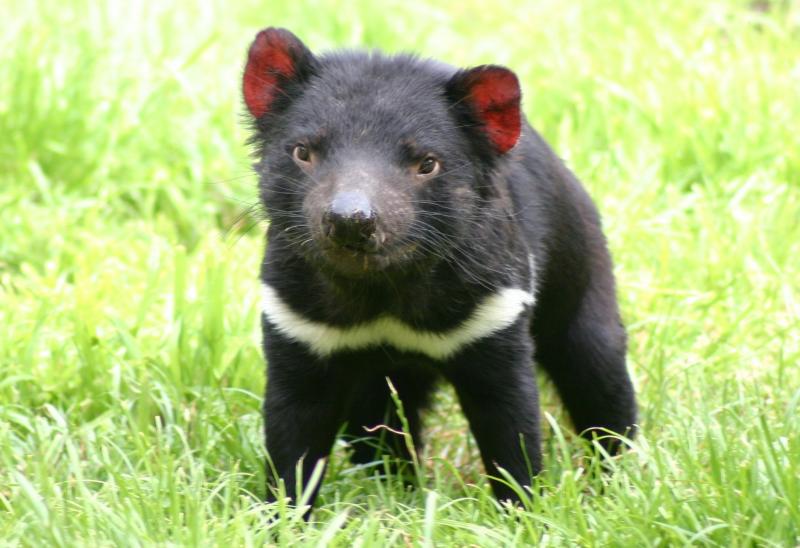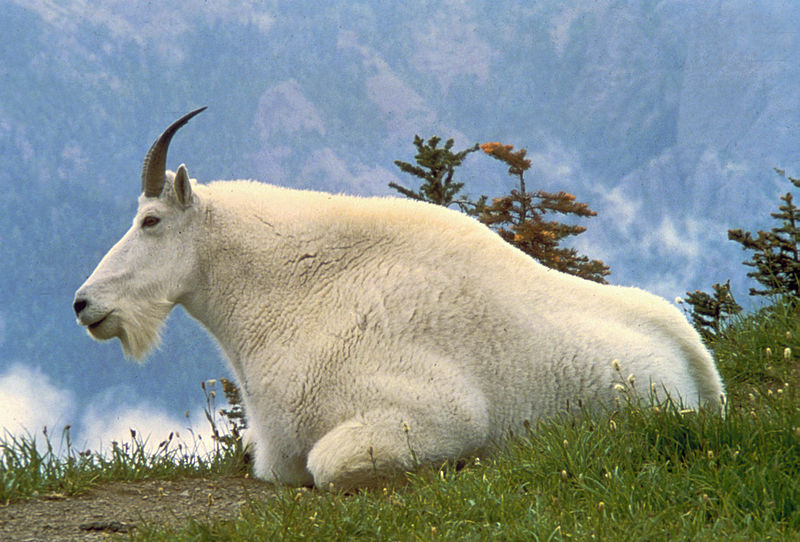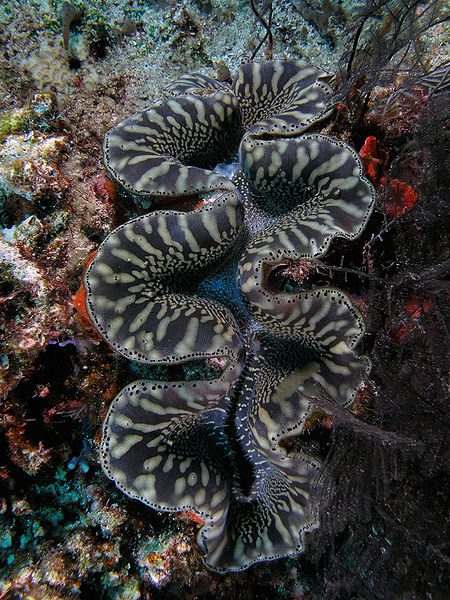
I had every intention to leave the ocean and talk about a nice land animal but I accidentally tripped over a Giant Clam after studying the Fin Whale. Well, you know how my mind works so that means today we are going to learn about the largest living bivalve mollusc, the Giant Clam. Again, we tend to find the Giant Clam hanging around coral reefs in the Indian and South Pacific Oceans. The Giant Clam has to be very careful when selecting its home since the moment it attaches to a piece of coral, it will remain in that location for the rest of its life. Talk about a big decision!
So just how big is the Giant Clam? Well this mammoth mollusc can get as large as 1.2 m (4′) in length and weigh up to an amazing 227 kg (500 lbs). The next question I have is how could I have possibly tripped over this large animal? Clearly I was making that story up. These incredible creatures are able to get this large by feeding on the sugars and protein created by the millions and millions of algae that live in their tissues. As a trade off for providing the clam with food the algae receives a nice safe home in return. As well, the Giant Clam provides them with the opportunity to photosynthesize by basking in the sun just below the waters surface. Don’t you love all of these mutual relationships animals have?
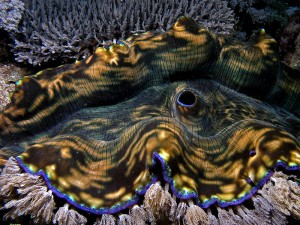
If you have actually heard of the Giant Clam then you probably have heard about the horrible stories associated with them. There are legends that the Giant Clam has actually consumed human beings. Now I know this sounds like some B-Rated Horror flick but these rumours do exist. It is important to note that these are just stories. There has been no record of a human being consumed by a Giant Clam. Even the largest Giant Clam would most likely just hide inside its shell has the human swam by. Besides, the muscles of the Clam move far to slowly to surprise a human being. No matter how much you wanted to believe in the Killer Giant Clam, it just wouldn’t happen.
Giant Clam Fast Fact – These same adductor muscles that open and close the shell are considered a delicacy. This has caused over-harvesting to occur and coupled with the aquarium junkies out there has the Giant Clam heading into troubled waters. They have been listed as vulnerable on the IUCN List due to this decrease in population size.
And that my friends is the end of the Giant Clam Wild Fact. Tune in tomorrow to find out if we actually leave the ocean waters behind and venture onto land. Enjoy the rest of your day.


